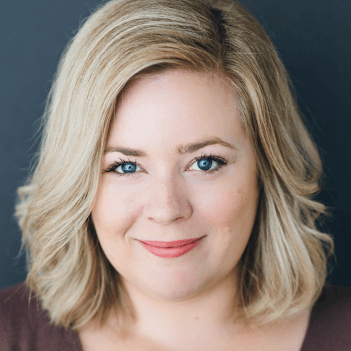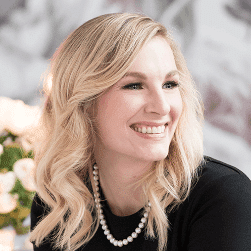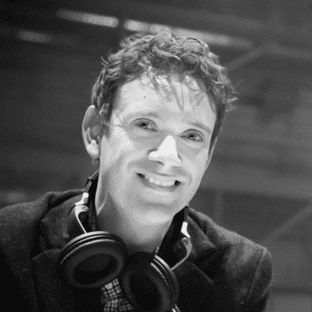One of the biggest struggles that comes with starting and sustaining a business is learning how to go about pricing yourself. This is especially true if you’re just starting out but still true even for seasoned professionals.
As a new entrepreneur, you know that you don’t have the experience or the brand power to charge those top tier rates (at least not yet) but that doesn’t mean you should undersell your talent or dramatically undercut your competition. Sure, you may win some clients in the short term, but in the long run, this strategy is quite likely to backfire: if you’re not even covering your costs, it’s unlikely that you’ll stay in business for long. If you are covering your costs, but charging rock bottom prices, it’s not likely to lead you toward attracting the type of clientele that you’re ultimately after.
For seasoned pros, you may have found a price point that worked for you in the past, but now that you have plenty of experience under your belt, an established brand, a team of staff, office space, and slew of other recurring expenses, you may be wondering when is the right time to raise your prices. And if so, by how much?
As you can likely imagine, there are no one-size-fits-all, hard and fast rules that apply across the board. Rest assured however, you are far from alone! To help answer this age-old quandry, we reached out to a handful of Toronto’s top pros for their advice on this tricky subject. Read on for some sage wisdom!
When it comes to effectively pricing your services, I feel it's important to examine time investment, experience, portfolio, and business expenses. I have been planning for almost 7 years now, so every year I raised my prices as I gained experience, refined my system, expanded my team and built an extensive portfolio. I learned to examine the numbers as well. It's a huge financial investment to run a business and I think sometimes entrepreneurs don't track how much money they are actually investing toward their company.
For those just starting out, focus on the facts versus pricing emotionally. I suggest to carefully track hours for the first year of business to fully understand how much time and energy is being invested for each service. Use these numbers to help determine service costs and price to profit. Undercutting may be a tempting strategy to use to gain business when you are just starting, but I highly suggest to research your region's average starting price and range, and to avoid taking on projects below industry standards. Undercutting lowers the worth of your peers and your own company, not to mention down the road can damage your brand and business. I truly believe you attract what you believe you are worth!

Creative people often have a hard time valuing themselves. We have this idea that we can't charge a premium for what we do because we actually enjoy our work. We need to change this idea that you can only profit if you suffer. No, you do not just 'show up and take photos'. You provide thoughtful, beautiful, and invaluable memories that will last a lifetime, AND play a huge role in the couples' experience on their wedding day. Value yourself as an artist and as a business person.
To people just starting out, I'm not going to lie to you and say that you can charge a premium right away. You do need a few years of experience under your belt first. Start on the low end, and gain as much experience as you can. But if your prices stay in the bottom bracket for too long, potential clients see that as a sign that your work is in the bottom bracket too. Eventually, you need to have the confidence to raise your prices.

'But it's just flour and sugar, right? Why does cake cost so much!?' Well, that cake recipe took a long time to perfect, months of learning and fine tuning work on sugar flowers, not to mention the hours to keep a steady hand piping those details. The learning curve in this industry can be a steep and costly journey. As a cake artist, there is no standard rate or chart that applies to all orders. Each cake is unique, be it based on size, design or detail, which makes it challenging to determine whether or not you are charging enough or more than average. The best piece of advice that I have seen and has helped me feel confident in my pricing was this: 'If I do the work in 30 minutes, it's because I spent 10 years learning how to do it in 30 minutes. You owe me for the years, not the minutes.' - Davy Greenburg. Now, cakes will never be baked and decorated in 30 minutes (don't believe the shows!) however the principle still applies. You have honed a skill over a long period of time; that's what makes you a pro. Be sure to charge accordingly!
If you're just starting out, my advice is to get to know what the going rate is, DO NOT undercut it 'because you're new'. If you want to actually compete at that level for business, make sure you have a good product, and then price it so that it's right in the middle of those numbers. Give yourself time frames to get work done, double check your numbers and then adjust your prices again. Don't be afraid to continue to do this as you move through the years, you will realize what your comfortable margins are, where you can save, and where you can increase your profits. The bottom line is that your product should remain consistent, if not increase in value, while your labour and time go down in small increments as you get faster, find new ways of doing things, and improve your techniques. In this game, it's not knowing your numbers that will hurt you.

Pricing is always a sensitive topic with clients as it always turns their dreams into a battle with reality. It's a constant balancing act, but we believe the key is not to oversell ideas to a client. Keeping them grounded with their expectations and speaking honestly about what's actually feasible. Of course, every client wants a good deal, but one of the most important things to remember is to know your worth. What is your time and expertise worth and what would you like to get paid doing what you do best? If you believe you are worth what you charge, then your clients will too. Remember it's okay to say no to a project if you feel the client is low balling you.

I think a lot of planners undervalue their services and their time and price themselves according to what they think they should be charging. They evaluate their competitors rates, which is important, but that shouldn’t be the driver on setting their own rates. Don’t ever price yourself based on what other people rate themselves. The most important part of setting your rates is knowing your numbers. Know your operating expenses, and know what you need to generate in order to sustain a profitable business. You may have the luxury of another income which may allow you to charge less since it’s not your bread and butter. Or you may be the sole bread winner and need to reach a certain rate in order to live. Whatever your situation is, the best advice I can give you is to know your numbers inside and out. And don’t be afraid to price your worth.

Pricing comes down to 3 key factors: your business plan, your market and your value. You can’t possibly determine what to charge until you’ve decided where you are trying to go with your business. Are you a volume based business, or a boutique? Secondly, your market will determine to some extent what is possible. You simply can’t charge double what the average in your market charges for the same service. Finally, if you are adding value over other businesses and can properly convey this to your customers, then you may be able to charge more than your competitors.

I’d say when first starting out, if you’re looking to build a clientele, my advice would be to price yourself under the industry norm, yet make sure that your caliber of work is at the same level as those that you aspire to be like - or at least strive for that. Once you feel like your schedule is full and you can’t take anymore bookings, then I would consider raising your price point and elevating to industry norm. If you're looking to be more of a luxury service, I would only raise prices above industry norm once you feel like your service level and work is above average and above industry norm. I’ve always been an advocate of ensuring that creative types do not undervalue their craft. If people in the industry continually undercut one another, over time, it will lower the standard of what creative types are able to charge in the industry.
With that being said, if you are going to price yourself higher in the market, you need to ensure that the services you offer, the tools that you use, and the techniques you demonstrate are all at a level of excellence beyond what’s expected in the industry. With something like hair and makeup, it can be easy to do it for free for the exposure, however, I would encourage that if you are aiming for a professional career in this industry, once trained, to always require compensation for clients utilizing your skill set.

There is no right or wrong way to price out your services. If you are starting out, use the industry standard in your city as a starting point and go up/down based on your experience and niche. After you are more experienced, you can also price according to the amount of time it takes to provide your service and multiply it by the amount you'd like to charge per hour. Alternatively, you can give yourself a small raise every year after your calendar is 70-80% booked up.

It’s so important to consider a ‘living wage’: How much would you need to make in order to pay your basic expenses, plus whatever lifestyle activities and savings you want for your life? Too often we feel bad about charging for our work, and so some photographers can fall into a trap of not charging enough to make ends meet.
We have to understand that what we charge isn’t just an hourly rate - we aren’t photographing every day 9 to 5 like a regular job, but we ARE doing tons of work behind the scenes constantly: culling, editing, emails/meetings/admin, and other countless things that should be accounted for. Bottom line: think about how many gigs you can take on in a year (bearing in mind both the admin work and your lifestyle), think about how much income you need to sustain your lifestyle, and don’t be afraid to charge accordingly. Otherwise you can fall short on life payments and your business model will not be sustainable.
